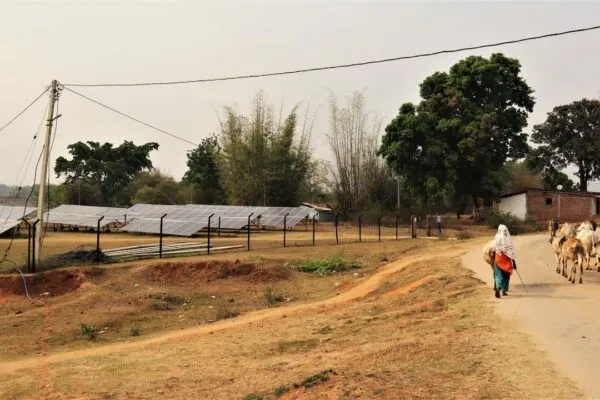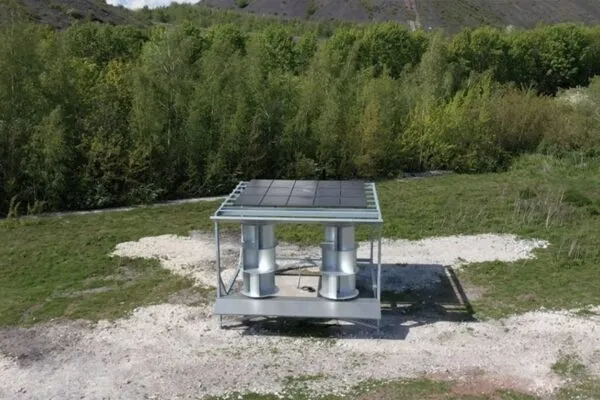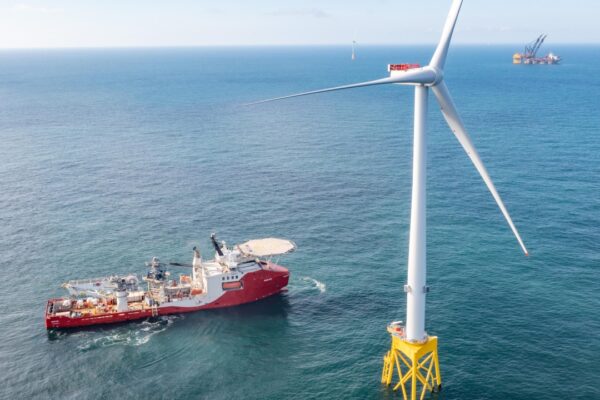Hong Kong Researchers Develop New Droplet-Based Electricity Generator
The global need for renewable energy has increased given the rapidly changing climate. Researchers have been exploring new aspects of the field to generate energy in various ways, and generating electricity from raindrops seems possible now. A research team led by scientists from the City University of Hong Kong (CityU) has recently developed a droplet-based electricity generator (DEG).
This new type of generator is equipped with FET, a field-effect transistor-like structure that allows for high energy-conversion efficiency and immediate power density increased by a thousand times as compared to its counterparts.
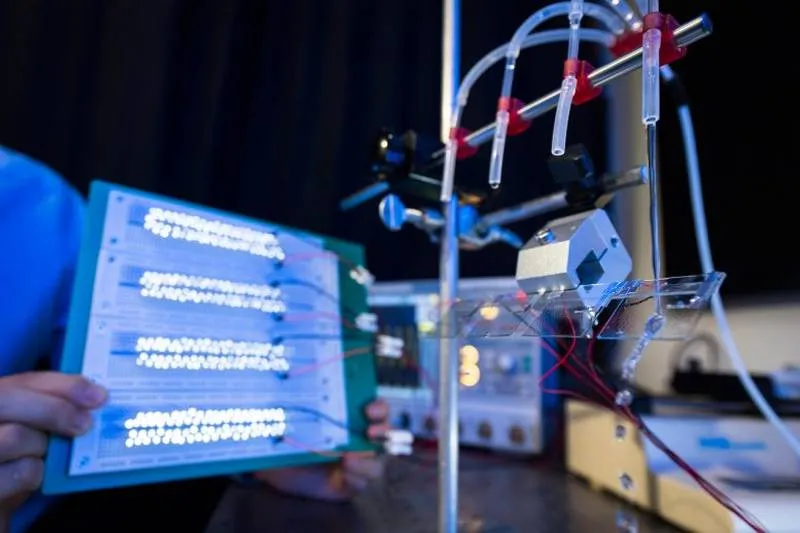
Droplet-based electricity generator developed by research team from the City University of Hong Kong / Image: Nature
The team of the researchers used Polytetrafluoroethylene (PTFE) as a coating for the electrodes in the FET. PTFE is an electret material with a quasi-permanent electric charge, which is similar to capacitors.
FET consists of an aluminum and an indium tin oxide electrodes with a PTFE coating. PTFE materials can store electrical energy in an electric field. So, when the raindrop hits the electrodes, PTFE allows them to generate uninterrupted power in a closed-loop.
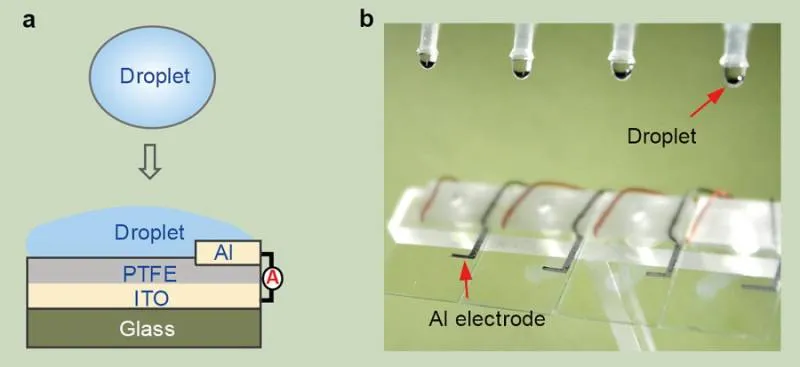
Water droplets act as gate of the transistor and complete the circuit when they hit surface of the glass / Image: Nature
Vibration from water droplets hitting this material can generate electricity. This system can bear heavy rainfall, the charge will keep on increasing till a saturation point.
Our research shows that a drop of 100 microliters (1 microliter = one-millionth liter) of water released from a height of 15 centimeter can generate over a voltage of 140V. And the power generated can light up 100 small LED light bulbs.
Said Professor Wang from CityU.
He further added that the increase in immediate power density does not result from the additional power but the conversion of the kinetic energy of the water droplets. He hoped that the outcome of this research would help harness the water energy to address the issue of renewable energy shortage.
In the long run, the new design could be applied and installed on different surfaces to fully utilize the low-frequency kinetic energy in water. It can vary from the hull surface of ferry, coastline, to the surface of umbrellas or even inside water bottles.
This recent innovation published in the science journal “Nature” will help unearth various new aspects of renewable energy generation, which will further help minimize the use of natural energy resources to reduce greenhouse gas emissions.
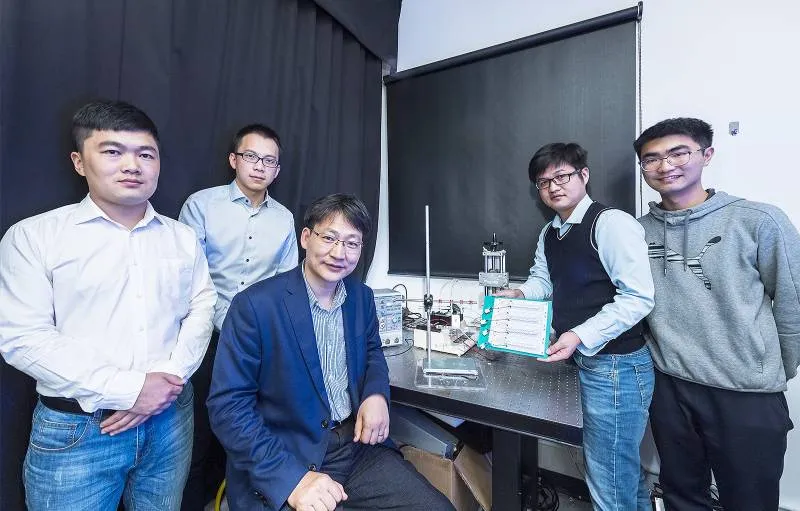
CityU research team: (from left) Mr Zheng Huanxi, Mr Xu Wanghuai, Professor Wang Zuankai, Dr Zhang Chao and Song Yuxin / Image: CityU
